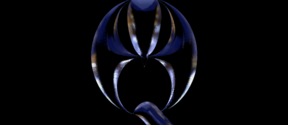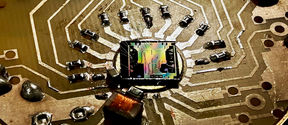Laying theoretical groundwork
These quantum monopoles are ephemeral by nature, decaying a few milliseconds after their creation. It is within this instability that the Alice ring takes shape.
‘Think of the monopole as an egg teetering at the top of a hill,’ Möttönen said. ‘The slightest perturbations can send it crashing down. In the same way, monopoles are subject to noise that triggers their decay into Alice rings.’
While monopoles are short-lived, the research group simulated stable Alice rings for as long as 84 milliseconds—over 20 times longer than the monopole lifespan. This leads researchers to be optimistic that future experiments will reveal even more peculiar properties of Alice rings.
‘From a distance, the Alice ring just looks like a monopole, but the world takes a different shape when peering through the centre of the ring,’ Hall said.
‘It is from this perspective that everything seems to be mirrored, as if the ring were a gateway into a world of antimatter instead of matter,’ Möttönen added.
In theory, a monopole passing through the centre of an Alice ring would be transformed into an anti-monopole of opposite charge. Correspondingly, the Alice ring’s charge would change as well. While this phenomenon has not yet been experimentally observed, Möttönen said the topological structure of Alice rings necessitates this behaviour.
The experimental work was conducted at Amherst College primarily by PhD candidate Alina Blinova and Hall, while Möttönen and his team were responsible for running matching simulations. This way, the two teams were able to confirm the interpretation of the experimental observations.
‘It is simply amazing to have such a major discovery as the finale of my PhD work,’ Blinova said.
The simulations conducted at Aalto University were made possible by support from CSC – IT Center for Science and the Research Council of Finland through its Centre of Excellence in Quantum Technology, and the American experiments by the financial support of the National Science Foundation.






